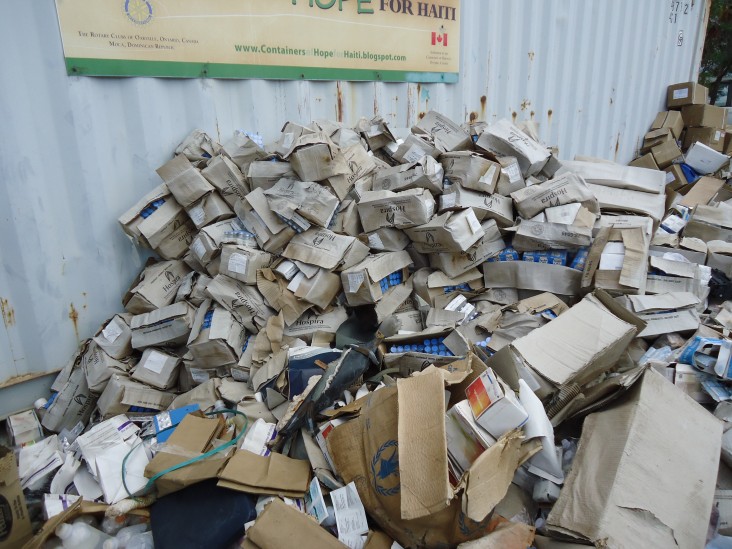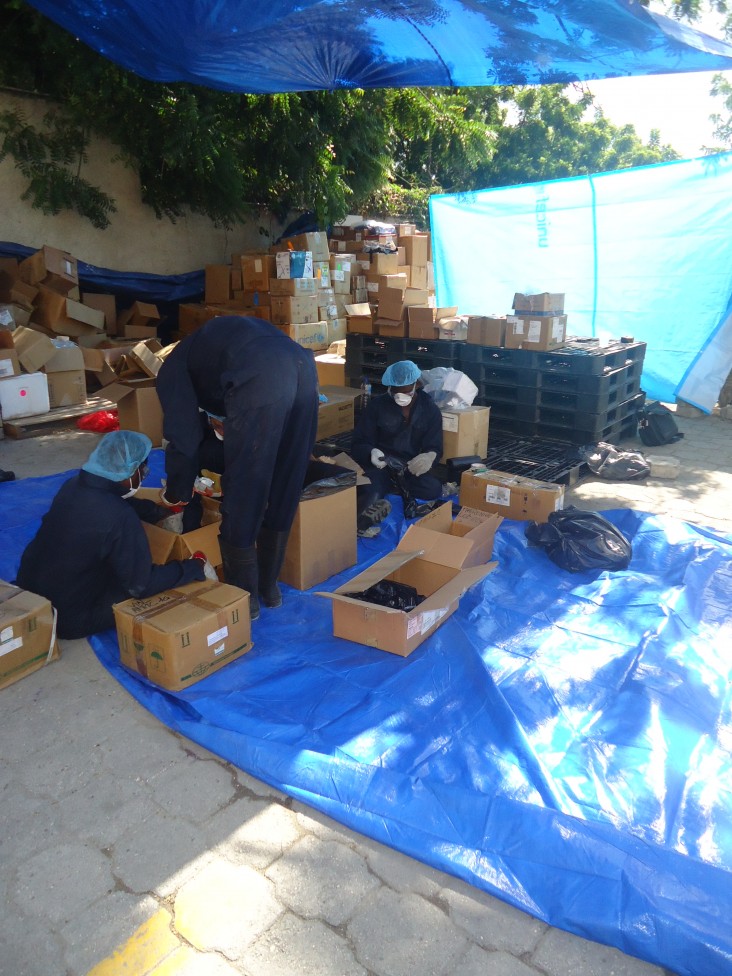
July 2014—Grace Children’s Hospital in Port-au-Prince, Haiti, has well-run pharmacies, but like many hospitals and clinics in developing countries, it has struggled to properly store and dispose of expired medicines and other pharmaceutical waste.
In 2013, USAID helped Haiti’s Ministry of Health to manage the country’s pharmaceutical waste by collecting, sorting and storing expired and unusable medicines from 80 health care facilities across the country. The effort was conducted through the Supply Chain Management System (SCMS), a project administered by USAID under the President’s Emergency Plan for AIDS Relief (PEPFAR).

Pharmaceutical waste was a particularly high priority at Grace Children’s Hospital, a site supported by the U.S. Government that treats thousands of children suffering from tuberculosis, HIV and other diseases. Lack of suitable storage inside the hospital led to piling mounds of expired medicines outside, creating both a health and environmental risk, as medicines dumped outdoors deteriorate over time and can leach into the ground, polluting the soil.
SCMS partnered with a French NGO, Pharmacie et Aide Humanitaire, to collect and sort 12,000 pounds of pharmaceutical waste from the hospital and safely store it in containers on loan from the United Nations Stabilization Mission in Haiti, eliminating the risk of environmental pollution.
“It was a relief to see it gone. I was seriously concerned that these potentially harmful drugs would be stolen from the hospital grounds and end up on street vendors’ racks being sold to unsuspecting citizens,” said Ralph Fedlin-Sainval, head pharmacist for the International Child Care Network, which supervises the AIDS program at Grace Children’s Hospital. “This would have put many lives at risk.”
A total of nearly 140,000 pounds of pharmaceutical waste has been collected nationwide under the USAID-funded program over the last nine months, now awaiting destruction. The Haiti Ministry of Health aims to create a national system that addresses all elements of pharmaceutical waste management, including training health care facilities on proper destruction.
“The collection of waste is like a dream come true,” said Eva Antoine, USAID/Haiti’s health commodities and logistics adviser. “Next, we will help destroy that legacy of dangerous pharmaceutical waste altogether.”
Initiated in 2006, the Supply Chain Management System fills a critical gap in Haiti’s health system by providing lifesaving medical supplies to those most in need. The system is designed to provide a reliable, sustainable supply chain—from procurement to management and distribution—of pharmaceuticals and other products necessary to care for persons with HIV/AIDS and related infections. It operates at PEPFAR sites located throughout Haiti’s 10 geographical departments.
Links
Follow @USAIDHaiti, on Facebook, on Flickr







Comment
Make a general inquiry or suggest an improvement.